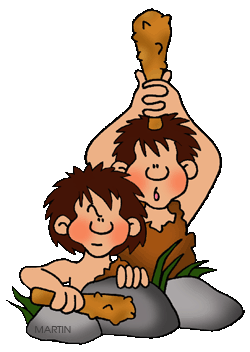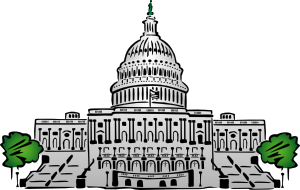The Floating City
The Floating City
The city of Tenochtitlan [te-nawch-tee-tlahn] was the capital city of the ancient Aztec Empire. Tenochtitlan was located in the center of Lake Texcoco in Mexico, what is modern -day Mexico City. The city was constructed on an island in the center of the lake with a series of canals connecting the land, which is why it is referred to as "the floating city". The city had floating gardens where they grew corn, pepper, tobacco, cotton, and other crops. The Aztecs used canoes to travel the canals to get around the city and bridges to get from the city to the land outside the lake. About 300,000 habitants lived in the city, which at the time made it a larger city than Madrid, Spain and Lisbon, Portugal. The Aztecs were able to become one of the strongest empires because of where their city was located. They were able to move the bridges to the island when intruders tried to invade. The floating city is now buried under Mexico's capital city, overtime the lake dried up and the floating city was no longer floating. If you visit Mexico City, you can see the ruins of Tenochtitlan.
Click to hear the pronunciation of "Tenochtitlan"!
Vocabulary
capital (noun): the location of a government (ex: Washington D.C. is the capital of the United States)
ancient (adjective): very old
empire (noun): a society under total control of one ruler (or emperor)
modern-day (adjective): existing or happening in the present
crops (noun): plants that are grown and harvested
intruder(s) (noun): a person who enters a place without permission
buried (to bury) (verb): to put in the ground and cover with the earth (or dirt)
floating (to float) (verb): to rest or move on or near the surface of a liquid
Vocabulary Exercise
Match the word to the picture.
1. 2.
2. 
A.) Directions: Underline the proper noun(s) in each sentence, or write a numbered list of the proper nouns on a separate sheet of paper.
1. Iceland is really cold in the winter.
2. We celebrate Father's day in June.
3. Jessica ordered shoes online from the company Zappos.
4. Jeremy Braccos plays hockey on the Toronto Maple Leafs.
5. My grandmother went to Columbia University in New York City.
B.) Directions: Rewrite each sentence using the correct capitalization for each proper noun.
1. tatum flew on american airlines to get to florida.
2. My dentist, doctor sherman, told me to get braces.
3. pope francis lives in vatican city, which is near italy.
4. There are many languages spoken in the united states.
5. rockville centre is located on long island, and francis murray is the mayor.
The city of Tenochtitlan [te-nawch-tee-tlahn] was the capital city of the ancient Aztec Empire. Tenochtitlan was located in the center of Lake Texcoco in Mexico, what is modern -day Mexico City. The city was constructed on an island in the center of the lake with a series of canals connecting the land, which is why it is referred to as "the floating city". The city had floating gardens where they grew corn, pepper, tobacco, cotton, and other crops. The Aztecs used canoes to travel the canals to get around the city and bridges to get from the city to the land outside the lake. About 300,000 habitants lived in the city, which at the time made it a larger city than Madrid, Spain and Lisbon, Portugal. The Aztecs were able to become one of the strongest empires because of where their city was located. They were able to move the bridges to the island when intruders tried to invade. The floating city is now buried under Mexico's capital city, overtime the lake dried up and the floating city was no longer floating. If you visit Mexico City, you can see the ruins of Tenochtitlan.
Click to hear the pronunciation of "Tenochtitlan"!
Vocabulary
capital (noun): the location of a government (ex: Washington D.C. is the capital of the United States)
ancient (adjective): very old
empire (noun): a society under total control of one ruler (or emperor)
modern-day (adjective): existing or happening in the present
crops (noun): plants that are grown and harvested
intruder(s) (noun): a person who enters a place without permission
buried (to bury) (verb): to put in the ground and cover with the earth (or dirt)
floating (to float) (verb): to rest or move on or near the surface of a liquid
Vocabulary Exercise
Match the word to the picture.
empire modern-day crops intruders buried ancient capital
1.
 2.
2.
Grammar Point
Proper Nouns
Names of people, places, organizations/businesses, holidays, and a person's title are all proper nouns. Proper nouns always refer to specific people, places, or things. When we write proper nouns, we always use a capital letter.
All the words underlined in the passage above are proper nouns, notice the capitalization of the first letter.
Examples
Places: United States of America, Mexico, Canada, Asia, Africa, Australia, Paris, Berlin, London, Rockville Centre
People: Ms. W, Madonna, Lebron James, George Clooney, Moctezuma, Sor Juana
Titles: President Donald Trump, Doctor Moody, Sir Elton John, Pope Francis, Queen Elizabeth
Holidays: Thanksgiving, Halloween, Hanukah, Christmas, Ramadan, Diwali, Yom Kippur, Easter, Chinese New Year, Martin Luther King Jr. Day, Mother's Day, Independence Day, etc.
Organizations/businesses: The Salvation Army, United Nations, Molloy College (place and organization), Amazon, Apple, Verizon, FedEx, Burger King, etc.
Grammar Exercise
A.) Directions: Underline the proper noun(s) in each sentence, or write a numbered list of the proper nouns on a separate sheet of paper.
1. Iceland is really cold in the winter.
2. We celebrate Father's day in June.
3. Jessica ordered shoes online from the company Zappos.
4. Jeremy Braccos plays hockey on the Toronto Maple Leafs.
5. My grandmother went to Columbia University in New York City.
B.) Directions: Rewrite each sentence using the correct capitalization for each proper noun.
1. tatum flew on american airlines to get to florida.
2. My dentist, doctor sherman, told me to get braces.
3. pope francis lives in vatican city, which is near italy.
4. There are many languages spoken in the united states.
5. rockville centre is located on long island, and francis murray is the mayor.







Comments
Post a Comment